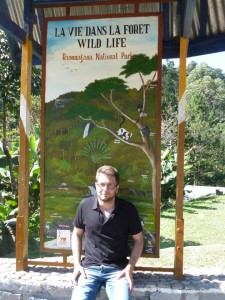
Phil in Ranomafana National Park
I’m Phil and am a volunteer with four species of lemur at Howletts Wild Animal Park in the UK. This year I have run a half-marathon for the Aspinall Foundation’s Madagascar project and fulfilled my dream of seeing lemurs in the wild.
For myself the name ‘Ranomafana’ has always conjured mystical images of abrupt hills, drifting mist, dense forest and hidden lemurs. It us a must-see for any nature lover heading to Madagascar. Although my group tour didn’t allow for long within its lush confines, it at least gave me a chance to glimpse some of the island’s most rare wildlife.
The omens were positive. Within a few hours of arriving in Antananarivo, I had an incredibly lucky encounter with Doctor Patricia Chapple Wright. Why was this fortunate? Doctor Wright was sent to Madagascar in the 1980s to rediscover the greater bamboo lemur, for decades believed to be extinct. She not only achieved this but found an entire new species, the golden bamboo lemur. ‘Madame Patrice’ then set about creating Ranomafana National Park.
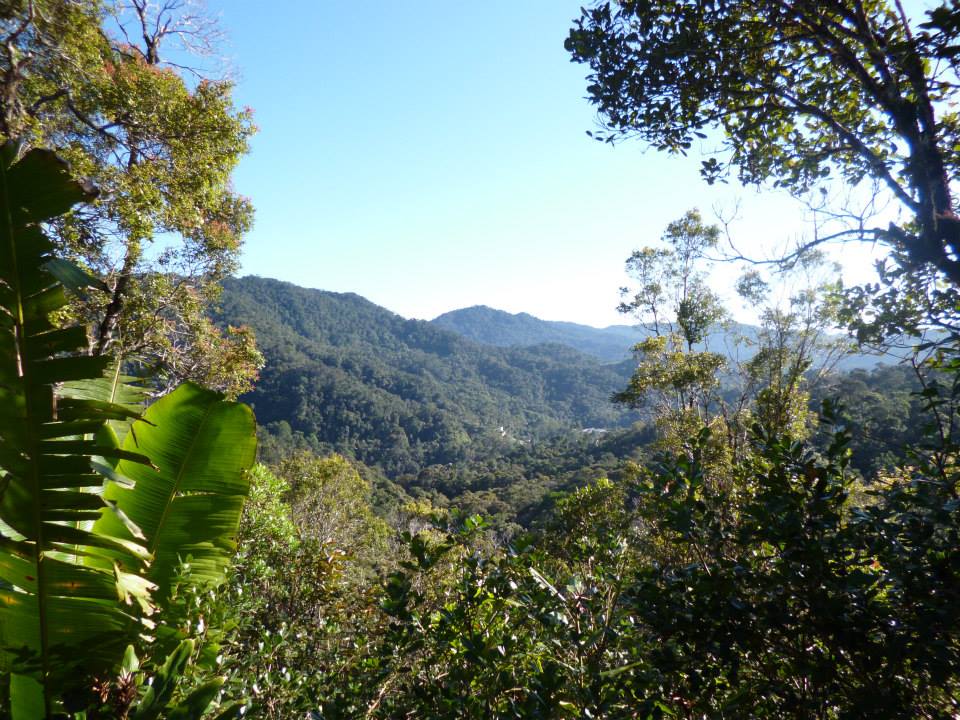
Ranomafana National Park: Not made for walking
Visiting Centre Valbio
To reach Eastern Madagascar and Ranomafana you must traverse an impossibly poor and pot-holed entrenched road. This surely turns into a collection of small lakes in the wet season. However, once passed you are rewarded with a remarkable view of the park. Driving halfway up a steep valley, to your right is a sheer drop to the river then on the other side is undulating, murky, pristine forest. I probably wasn’t the only person on my bus with goosebumps.
A small ensemble of us set off on a night walk along the road, an excellent way to spot chameleons and frogs, but I of course was after lemurs. A brown mouse lemur quickly obliged so I was left to nod along politely whilst getting excited about Doctor Wright’s invitation to the nearby ‘Valbio’ research centre.
This was sadly brief but it had been a long, demanding day on the road for all members of the group. I was elated and humbled to receive a tour of the place for lemur research and conservation by Doctor Wright herself, and learned a number of new things about the area’s nocturnal primates, the arduous work that goes on, and something truly exceptional about black and white ruffed lemurs. It’s not my place to divulge this information, but thinking of Aramis back at Howletts I did smile.
Mission Impossible: Seeing Ruffed Lemurs in the Wild
The next morning I was eager to arrange a separate guide to my tour in order to cover more ground and see more species. The priority? Seeing Aramis’s relatives in the wild, critically endangered ruffed lemurs. These prefer deep primary forest and live in low densities, plus being winter are not particularly active. Some people walk for days without seeing them, in fact one guide laughed when I said I had four hours.
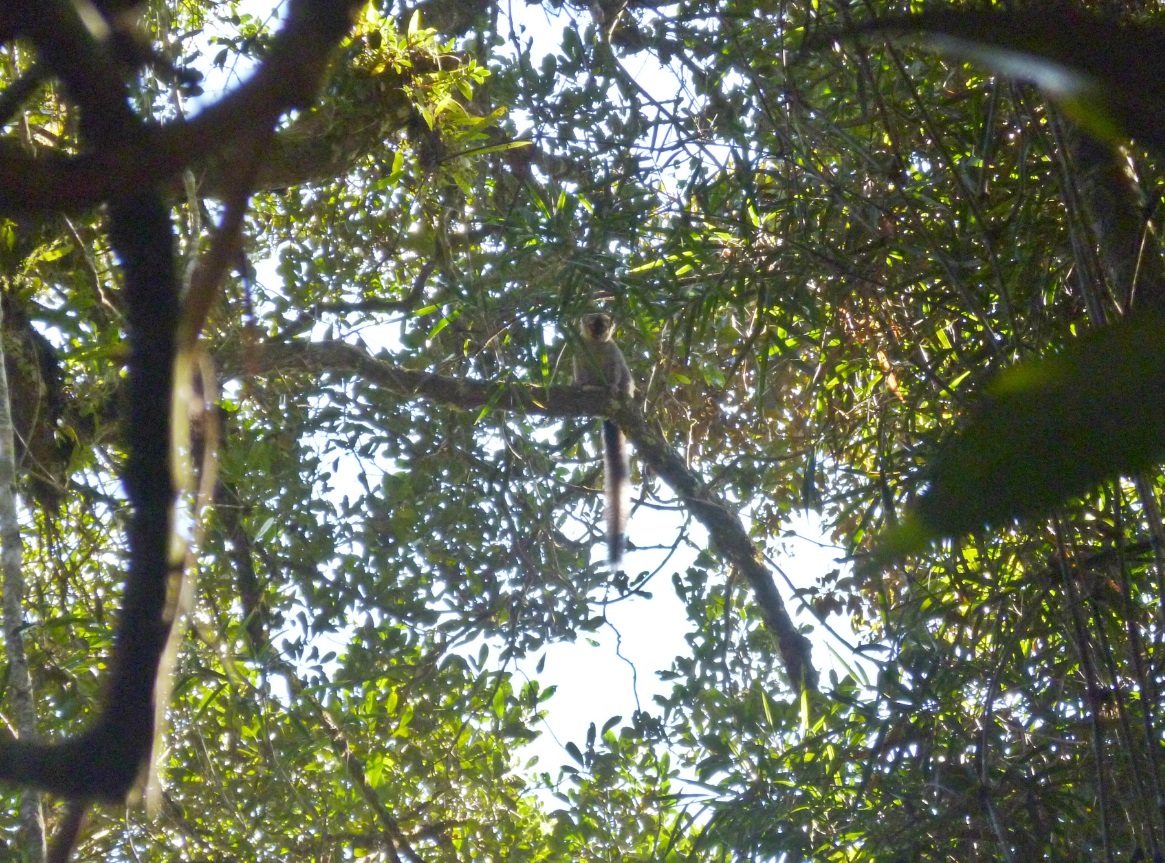
Finding ruffed lemurs proved difficult. This red fronted brown lemur watched us bemusedly.
Before long we had found a solo golden bamboo lemur. These are (for me) surprisingly agile and fast, and very easily lose human followers far below. We therefore moved on, myself, guide, plus two friends from the tour who were keen to see as many animals as possible.
Whilst Andasibe has rolling hills, I’d say Ranomafana’s terrain is rugged and punishing. This is especially gruelling when no lemurs want to say hi and the only wildlife you see are leeches. Dozens of them. I remained bite free but in my paranoia I began staring at the ground as I walked. In rainforest this is a stupid thing to do and I hastily became acquainted with a huge log that lay at head height across a path. I fell to the floor amid much swearing and laughing, with the thud probably scaring off any fauna in the area (apart from leeches).
It took a while but we eventually found another prosimian – a red-fronted brown lemur. These live in groups but a lone male sat watching us, somewhat bemused by the two-legged creatures underneath. In Isalo National Park, I later discovered how confident and mischievous these lemurs can be.
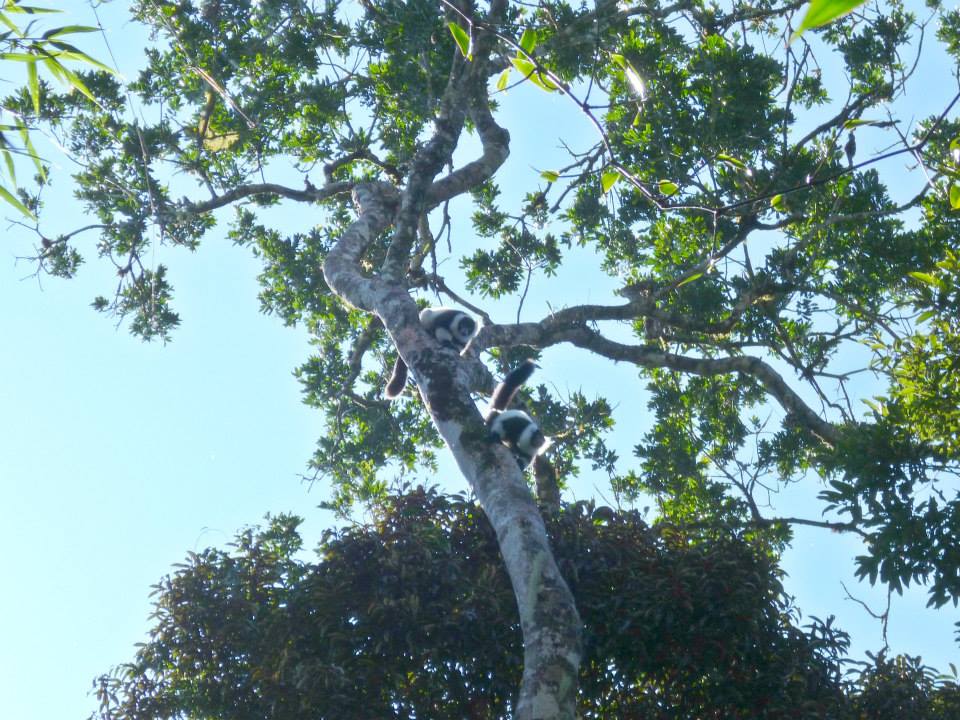
Black and white ruffed lemurs in the wild are far more secretive than they appear in zoos
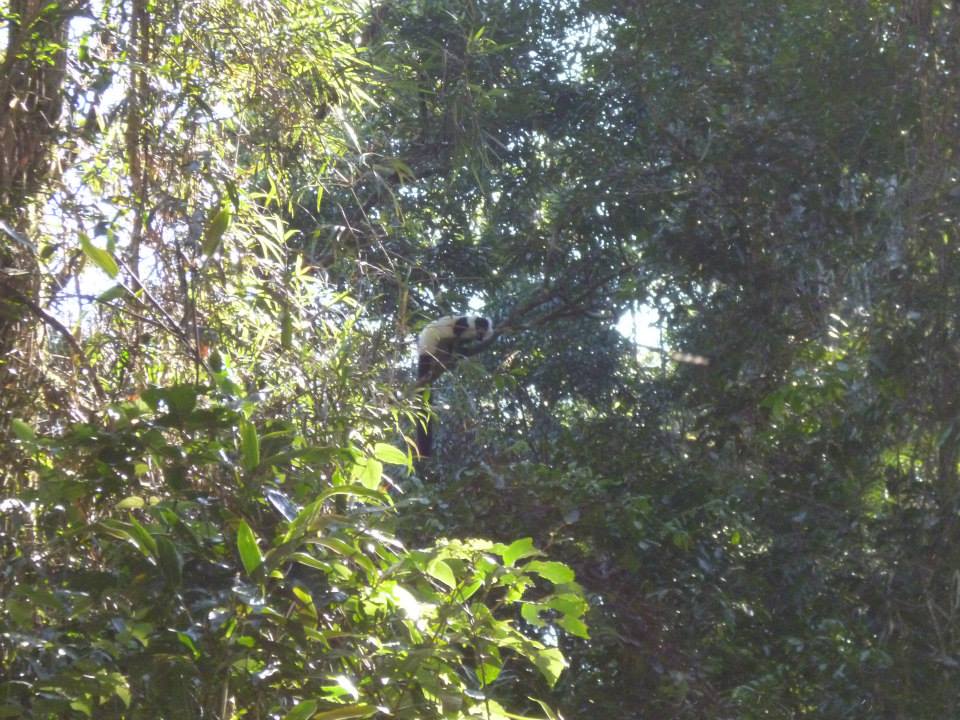
Happiness is seeing black and white ruffed lemurs in the wild
One Ruff Encounter
Into primary forest the slopes worsened and we left the trails. This is where you need to use all limbs and digits to stay vertical. Occasionally my guide emitted a black and white ruffed lemur growl to encourage a response from somewhere, so when I heard the trademark ‘grrrr’ I wasn’t initially enthusiastic.
I wept. I’d spent thousands of pounds and travelled thousands of miles and here in front of me was my favourite animal as it should be seen, in the wild. It finished what it was eating and climbed high above our heads, before others came into view. It was one of those rare moments in life when everything is perfect and there is absolutely nowhere else you’d rather be.
Every thirty seconds we’d hear the ‘grrr’ because of our presence, we were unnerving them and so they kept travelling. In thick jungle, it is exceedingly challenging to follow animals in the canopy, so after five minutes I suggested we leave them in peace and return to the entrance.
With the sun now high in the sky, the heat and slopes screamed at me but it didn’t matter. I was still battling tears of happiness. We found two red-bellied lemurs resting in a tree, another species I work with at Howletts. Much like my ones these were lazy and reclusive, I thought they may be brown lemurs but hey, a local professional will definitely know better.
A Happy Ending?
Our last treat was a greater bamboo lemur curled up sleeping near the entrance. This secondary forest is where the bamboo grows and it is easy to tell where they’ve been, their feeding leaving a trail of destruction behind. This was also special because in March I ran a half-marathon for the Aspinall Foundation’s work with greater bamboos, one of the world’s most endangered primates. I had to rush off though, and bid farewell to one of the planets’s most magical places.
I’d have liked longer but we did cover more miles than a whole day’s walk usually does. I was content, in fact hours later on the bus I was still welling up. I know, I’m supposed to be a grown guy… There are so many things about lemurs though that are unique, quirky, cute, amusing and fascinating. They are amazing animals and deserve all of our help in their fight for survival because without us, the only tears for them will be ones of sorrow.




